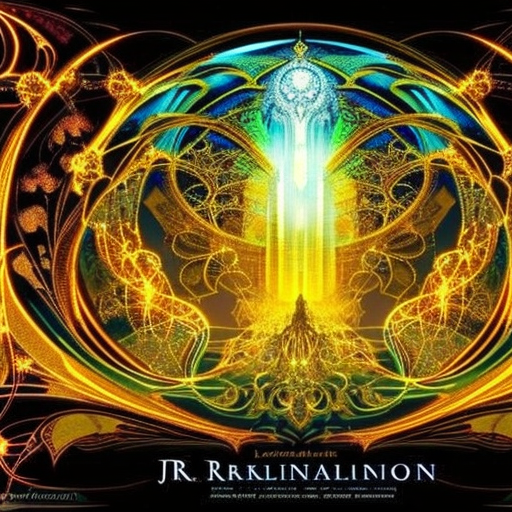One-line summary:
The Silmarillion is a rich and complex mythology that explores the creation of Middle-earth and the epic tales of its inhabitants.
The Creation of Middle-earth
The Silmarillion, written by J.R.R. Tolkien, is a collection of mythopoeic stories that delve into the creation of Middle-earth, the setting for his renowned novels The Hobbit and The Lord of the Rings. Divided into five parts, the book presents a vast and intricate history that spans thousands of years.
The first part, “Ainulindalë,” introduces the creation of the world by the supreme being, Eru Ilúvatar, and the powerful Ainur, angelic beings who participate in the shaping of the universe through music. The Ainur’s melodies give rise to the physical world, and the most talented among them, Melkor, rebels against the harmony, sowing discord and becoming the source of evil.
The Ages of Middle-earth
The subsequent parts of The Silmarillion explore the different ages of Middle-earth and the struggles faced by its inhabitants. “Valaquenta” describes the powers and characteristics of the Valar and Maiar, the lesser deities who shape the world and aid the Elves and Men in their battles against Melkor.
In “Quenta Silmarillion,” the third part, the narrative delves into the history of the Elves, their awakening, and their journey to the land of Valinor, where they encounter the Valar. The Elves are divided into different tribes, each with its own unique characteristics and destinies. The Noldor, led by Fëanor, play a central role in the narrative as they strive to reclaim the Silmarils, three precious jewels crafted by Fëanor that were stolen by Melkor.
The fourth part, “Akallabêth,” tells the story of the downfall of the island kingdom of Númenor, a land gifted to Men by the Valar. The Númenóreans, once noble and faithful, are corrupted by the influence of Sauron, Melkor’s lieutenant. Their pride and desire for immortality lead to their destruction, and only a few survivors, including Elendil and his sons, escape to Middle-earth.
The War of the Ring and Beyond
The final part of The Silmarillion, “Of the Rings of Power and the Third Age,” provides a bridge to the events of The Lord of the Rings. It recounts the forging of the Rings of Power by the Elves, the treachery of Sauron, and the subsequent war against him. The narrative also introduces the Dwarves and their quest for wealth, as well as the rise of the Dark Lord in the fortress of Dol Guldur.
The Silmarillion concludes with the events leading up to the War of the Ring and the fate of the remaining Elves in Middle-earth. It sets the stage for the epic battles and heroic quests that unfold in Tolkien’s later works.
Key Takeaways:
- The Silmarillion is a complex and expansive mythology that serves as the foundation for Tolkien’s Middle-earth.
- The book explores the creation of the world, the struggles between good and evil, and the destinies of various races.
- Themes of pride, corruption, and the consequences of greed are prevalent throughout the narrative.
- The Silmarillion provides valuable context and background for readers of The Hobbit and The Lord of the Rings.
“It is said by the Eldar that in water there lives yet the echo of the Music of the Ainur more than in any substance that is in this Earth; and many of the Children of Ilúvatar hearken still unsated to the voices of the Sea, and yet know not for what they listen.” – J.R.R. Tolkien, The Silmarillion












